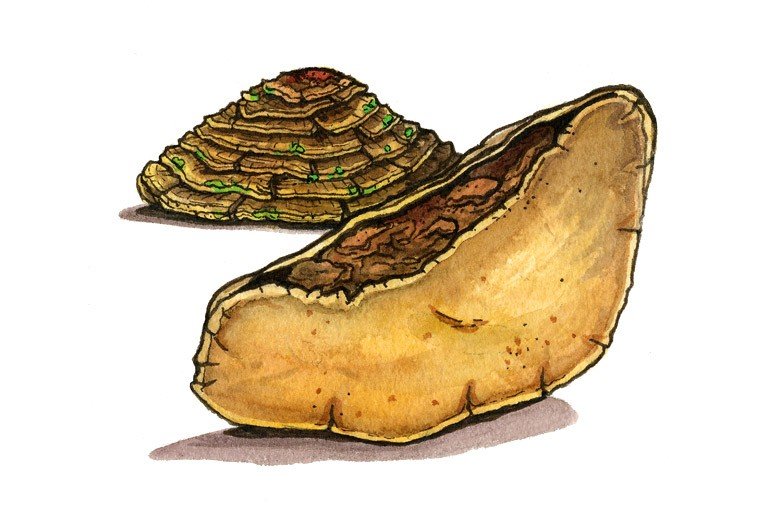
Common Names
- Meshimakobu
- Meshima
- Song gen
- Sanghuang
For Patients & Caregivers
Tell your healthcare providers about any dietary supplements you’re taking, such as herbs, vitamins, minerals, and natural or home remedies. This will help them manage your care and keep you safe.
What is it?
Although lab studies suggest anticancer properties with this medicinal mushroom, clinical trials are needed to confirm such effects.
P. linteus is a medicinal mushroom used in traditional medicine in Asia. Lab studies suggest compounds present in this mushroom may have anti-inflammatory and antitumor properties.
Data in humans are very limited, however. There is one study that suggests it maybe helpful as an add-on treatment in some pancreatic cancer patients. Well-designed trials are needed to confirm these effects.
What are the potential uses and benefits?
- To inhibit tumor growth
P. linteus has been shown in some lab studies to inhibit tumor growth. One study in pancreatic cancer patients suggest it may be helpful as an add-on therapy. There are also a few cases of regression of liver and prostate cancers. Well-designed studies are needed to confirm such effects. - To reduce inflammation
Preclinical studies suggest anti-inflammatory effects, but data in humans are lacking.
What are the side effects?
Case report
P. linteus use resulted in worsening of an autoimmune skin condition called pemphigus that is characterized by blisters, itching, and burning.
For Healthcare Professionals
Scientific Name
Clinical Summary
Phellinus linteus (PL) is a yellow, bitter-tasting mushroom that grows on mulberry trees. It is used in traditional medicine in Asia where it is often mixed with other medicinal mushrooms such as reishi and maitake, and promoted as an adjunctive treatment during cancer therapy. It also has traditional applications in the treatment of hemorrhage, hemostasis, and menstrual disorders (27).
Preclinical studies have identified polysaccharide-protein complexes in PL that may have immunomodulating effects (1). In animal models, the polyphenolic constituent demonstrated anti-inflammatory properties, which may protect against injury and other syndromes involving infarcts, hematomas, or hemorrhages (2) (3). Other constituents such as interfungin A may help prevent protein modification in hyperglycemic states (4).
PL extracts have exhibited a variety of properties in human cancer cell lines (28). In vitro and animal studies suggest antiangiogenic and antioxidant effects (5). Antiproliferative effects against breast (6) (7) (8), colon (9) (10) (30), liver (11), lung (12) (13), oral (14), prostate (15) (16) (17), and skin cancers (1) (18) (19) have also been reported. In addition, PL and its constituents have exhibited chemosensitizing effects in pancreatic and colon cancer cells (29) (31).
Studies in humans are very limited. Preliminary data in pancreatic cancer patients suggest PL may improve outcomes in part by improving adherence to adjuvant chemotherapy (32). There are also a few case reports of tumor regression following consumption of PL (11) (20) (21). However, well-designed trials are needed to confirm these effects.
Purported Uses and Benefits
- Cancer
- Inflammation
Mechanism of Action
Polysaccharide-protein complexes found in PL have immunomodulating (1), antiangiogenic, and antioxidant properties (5). Furopyranone compounds in PL that inhibit protein glycation may have applications in preventing or treating diabetic complications (4) (23). In non-obese diabetic mice, a PL-polysaccharide extract enhanced function of macrophages, as well as dendritic, NK, T, and B cells, and prevented inflammation by inhibiting IFNγ, IL2, and TNFα via TH1 cells and macrophages. It also upregulated IL4 expression in TH2 cells (23).
Anti-inflammatory activities of inotilone isolated from PL might be due to reduced levels of malondialdehyde, inducible NO synthase, COX2, NFκB, and MMP9, as well as increased activities of catalase, superoxide dismutase, and glutathione peroxidase via TNFα and NO suppression (25).
The phenolic compound hispidin protected against cytotoxicity, DNA damage, and hydroxyl radical formation (26).
PL inhibited proliferation in human colon cancer cells via decreased Bcl2 and cyclin B1 and increased cytochrome C (9). Another study similarly found a PL extract induced G0/G1 arrest and apoptosis in human colon carcinoma cells via p21 upregulation, cyclin D1 and Bcl2 downregulation, release of cytochrome C, and activation of caspases 9, 3, and 8 (10). Decreased cyclin-dependent kinases CDK2, 4, and 6, and dose-dependent apoptosis of lung cancer cells after treatment with PL were also observed (12).
Adverse Reactions
Case Report
- Exacerbation of the autoimmune disorder pemphigus: Following use of PL (24).